A solid corporate communications strategy can make the world of a difference when it comes to productivity, employee experience, brand awareness, and employee retention. It’s how leadership communicates to staff, how team members communicate with directors, how customers interact with your business, and how your entire organization stays aligned. The corporate communications strategy can also be one of the areas where businesses struggle with the most.
In fact, 96% of people think the businesses they deal with could improve when it comes to communication and project management, according to a 2019 study by Project.co. This means that there is room for businesses to reevaluate, tweak, or reimagine how they communicate to the people who matter most—employees and customers.
5 reasons why effective corporate communication tools are essential.
A corporate communications strategy is a strategic framework for how your organization communicates with a targeted audience. This makes the tools or channels used to drive these messages imperative. Let’s take a look at the benefits of an effective communications strategy and why business communication tools are important.
1. Discover better ideas and solutions.
Collaboration and knowledge sharing is one of the biggest benefits from a corporate communications strategy. Take a look at Starbucks. In 1993 at a Santa Monica location, a district manager had an idea to add a sweetened blended coffee drink to the menu. Within the first year, this drink, now known as the Frappuccino, brought in $52 million. (To learn more about this story and others like it, here’s an ebook about how to boost employee engagement by tapping into the minds of your employees.)
Now practically 20 years later, you can take this Starbucks example to the next level by leveraging numerous tools to crowdsource ideas on a larger scale. Social features, such as comments, likes, and tags, encourage conversation and idea sharing. Start actual conversations with the people who know your company the best with polls, surveys, and ideation tools. These features allow you to collect ideas, open the door to more innovation, and drive collaboration.
2. Improve employee morale and happiness.
High morale means stronger productivity and retention. If your employees feel supported, they will be willing to go the extra mile. This means a couple things. For starters, assess the tools and platforms everyone uses on a daily basis. If internal communication tools slow down the way people get work done, it will translate into how they approach their jobs in the first place.
Also pay attention to how communication works on all levels of your organization. Is there a streamlined strategy for managers to loop team members into a project? Is it an intuitive experience for customers to track down the right person to solve an issue? Put people at the center of your corporate communications strategy and you will have a more engaged, fulfilled, and proactive business.
3. Increase employee productivity.
The productivity levels of your employees directly correlates to your overall success. In fact, communication is the number one reason why employees quit. To create a work environment that nurtures productivity, employees need to know what’s expected of them so they feel secure in their roles and can deliver. By improving your corporate communications strategy, you’ll also improve productivity.
4. Eliminate roadblocks.
Have you ever been deep into a project only to find out that something has been miscommunicated and you now have to start from scratch? Or maybe an unexpected curveball derailed a project and there’s no backup plan in place. Unfortunately, the answer is likely “yes.” This happens often, especially in today’s quick moving world.
When miscommunication happens, email is typically the culprit. An effective corporate communications strategy can solve this. Try relying less on email and more on effective tools, like an intranet application, that reaches employees in a place where they will see it. Avoiding roadblocks can be difficult because it’s not always possible to see them coming, but your corporate communications strategy will be there to navigate unpredicted circumstances and unite your workforce. Being prepared will keep roadblocks at bay, which means improved internal workflows, projects, and results.
5. Higher levels of employee engagement.
Navigating employee engagement is an ongoing process because over time, your business will change. An established corporate communications strategy will help bring new hires on board and keep current staff engaged and plugged in. While there is no one-size-fits-all method to turn engagement levels in your organization around, there are certainly a lot of employee engagement ideas that can help.
An employee that is communicating with his colleagues and actively working to solve problems will be far more engaged than one who is disassociated. The more you can do to help facilitate change, the better.
Benefits of a modern intranet software for your corporate communications strategy.
When people set out to improve communication in the workplace, they don’t always know where to start.
First step: review what internal and external communication looks like in your organization. The beauty of an intranet software platform like Axero, is that you can communicate in real-time with your staff and customers, regardless of where they are, while also centralizing data, knowledge, and everything your business needs to thrive.
Central to a modern intranet is its communication tools. There are a number of different channels to communicate with customers and colleagues, and understanding what sets Axero apart from other software can help to give you an idea of how it can be used for your corporate communications strategy and your business.
1. Private and group messaging.
For years, businesses relied heavily on email as their primary method of communication. It’s safe to say times have changed. Private and group messaging is a quicker, more direct way to get a hold of the right person. Axero offers a robust platform that empowers you to send private messages to groups or individuals—not to mention numerous integrations, like with Slack. Best of all, conversations are archived for future reference, allowing you to search and retrieve old conversations that may be useful down the road. When all virtual corporate communication is done via intranet software, you never have to worry about information or messages getting lost.
2. Private and shared calendars.
A strong corporate communications strategy goes beyond sending less emails and delivering announcements. It also plays a role in how meetings, events, and conferences are executed and shared.
Intranet calendars make scheduling a veritable breeze, and you’ll never have to worry about miscommunicating information. Schedule events, invite other members to join, set an attendee cap, and sync calendars. Individual private calendars can house personal reminders, while team-related events can be shared with your colleagues, eliminating confusion and overlap. You can also create an events page—like this intranet template—where people can view company and team calendars, RSVP to events, and keep an eye on new ones.
3. Forums and open discussions.
Intranet discussion forums are a great tool to incorporate into your corporate communications strategy. Discussion forums allow you to browse posts for information, create virtual helpdesks, spark conversations, and establish a space for helping employees and customers to connect.
4. Case, ticketing, and issue tracking.
No matter how well you run your organization, unforeseen issues happen. The ability to create cases and track issues to completion is essential to problem solving, and expediting similar situations in the future.
Axero’s case and issue tracking software allows you and your employees to intuitively communicate with colleagues and customers, while tracking progress and storing it for the future. It also lets people bounce ideas off of each other and swiftly find a solution. Use tickets and cases as a tool for customer support, too! Offer a personalized and proactive customer service experience by giving customers a portal to post questions, find FAQ pages and resources, while your support team can internally loop the right person in to solve the problem.
9 tips to implement a modern intranet software into your corporate communications strategy.
Whenever you implement a new type of software, getting started can take time. But with a thought-out list of goals and the right communication tools, like professional services intranet software, you have the best setup for a successful internal communications strategy. Here are 9 tips to help you to get the most out of your experience.
1. Design a rollout plan.
There’s always learning curves when introducing a new business tool, but the implementation process should be as streamlined as possible. Work this into your corporate communications strategy. The goal is to not disrupt operations, but elevate it with new features that accelerates how people do their jobs.
Design a rollout plan, which includes when and how you inform your employees about this new addition, how teams will be trained to use the tool, and where people can go for questions and additional support. Preparation is essential to a smooth transition—and it doesn’t have to be complicated. On a larger scale, here is how Axero lays out an implementation plan for our software.
2. Train your staff.
Speaking of implementation, a common mistake to avoid is not devoting enough time to train staff. In order to get the most out of your corporate communications strategy, your staff needs to have a good handle on how to use the new tool you are implementing. If the employee experience is intuitive and easy for users at all levels, you won’t have to worry about setting aside a lot of time to train your staff. But, you will need to make sure everyone is on board and adequately trained.
3. Create a daily routine.
Creating a daily routine puts the workday on the right track, and can be tailored to fit individual needs and those of your staff. Set a list of expectations or a daily checklist for your teams—which may look different based on the department or branch. But what should be uniform across all teams is logging into the intranet, or employee portal, every day. This is where employees can read company or department-wide announcements, check the status of ongoing projects, and connect with your company.
4. Utilize online workspaces.
One of the key features of Axero is the ability to create unique online workspaces in the virtual community for teams, projects and discussion groups. Spaces are isolated from the community at large, allowing you and your employees to upload documents, create discussions, and communicate in real-time without worrying about information overlap or unread messages. When spaces are efficiently incorporated into your corporate communications strategy, it can be a powerful to connect employees with a shared goal and boost collaboration.
5. Encourage employees to start a discussion.
Getting a social community off the ground doesn’t happen overnight. CEOs and managers should take time to do their part in kickstarting the community by encouraging employees to start discussions in the intranet. Discussions can be easily started from the dropdown menu and will help build your internal knowledge base, not to mention push corporate communications forward. (Here’s more tips about how to create the best company intranet.)
6. Take time to explore.
Axero offers a robust browsing and search tool that makes navigating your virtual community a breeze and empowers you to understand how things are organized and where they’re located. Get a lay of the land and encourage users to move around the platform. The more familiar everyone becomes to the modern intranet, the easier it will be to use.
7. Make use of gamification.
Intranet gamification is an excellent way to communicate goals and encourage positive behavior, while making the experience engaging. With gamification tools added into your corporate communications strategy, you can set up a point system so that when someone completes a specific task, they receive points and move up the ladder. Additionally, you can also create gamification programs, which will automate badges when a user completes a series of tasks. If motivating employees is a core focus in your internal communications strategy, then gamification is a great option.
8. Don’t overlook the “like” and “rate” features.
One of the perks of using an intranet is that you can create a content hierarchy that sorts the most popular files, documents, blogs and wikis. In Axero, content can be rated and “liked,” which will help to set highly important articles and documentation apart from the crowd. (You can even promote content!) Encouraging your employees to use these functions as often as possible will help to keep your virtual community engaged and organized.
9. Refer to “how-to” videos.
A resource center—for internal communication tools and any important platform—will alleviate confusion and get everyone on the same page. Axero’s “how-to” videos are extremely helpful, because they break down common processes in a visual and guided way. Text ddocumentation, like a FAQ page, also gets the job done. A corporate communications strategy is effective when it actually loops employees into important initiatives—and a resource page will drive that mission forward.
In conclusion.
At the end of the day, your corporate communications strategy is a combination of how you want employees to work together and how you align them to these goals. By focusing on your objectives and internal features, you will set yourself up for success and build an even stronger workplace.

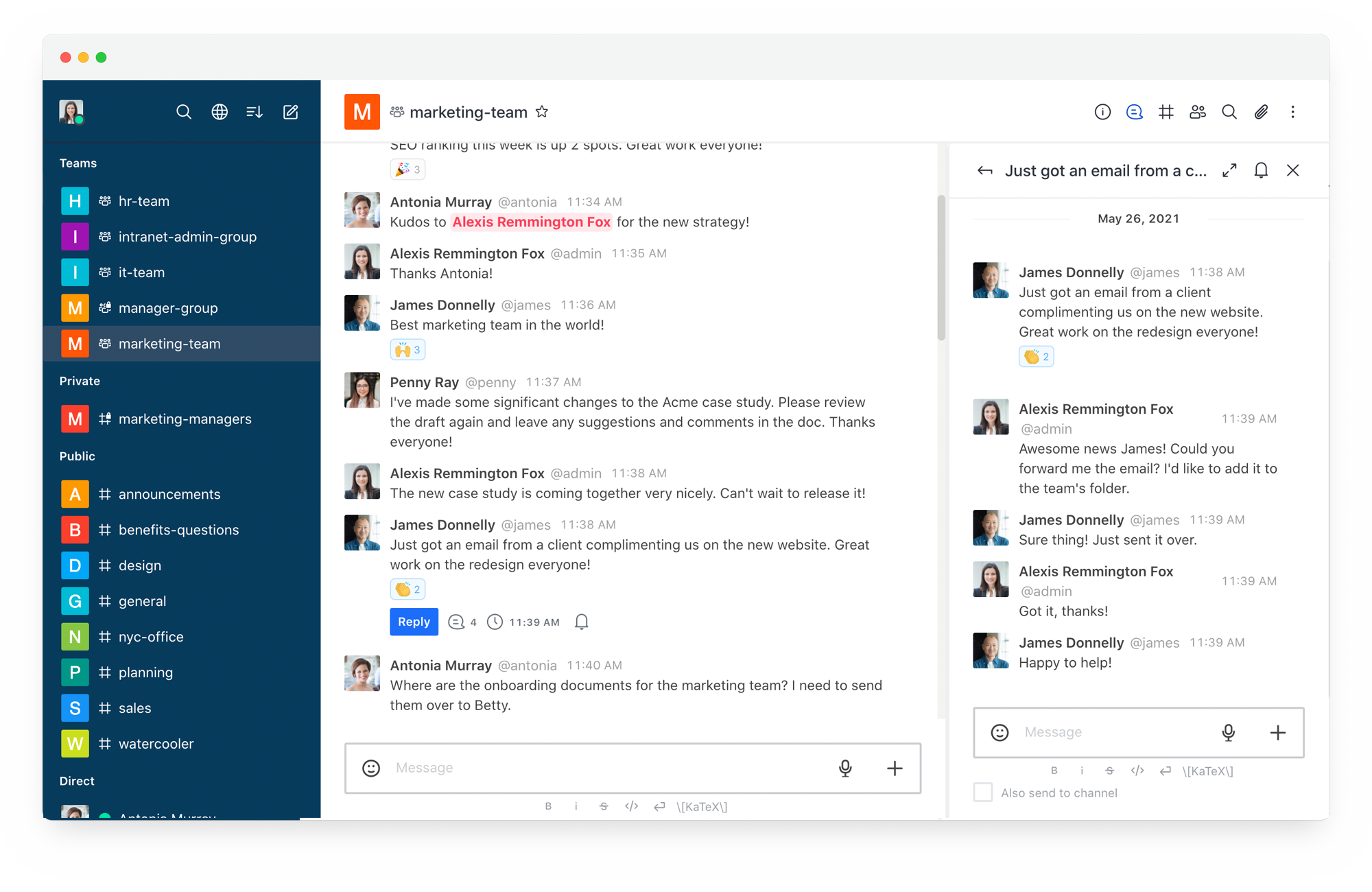
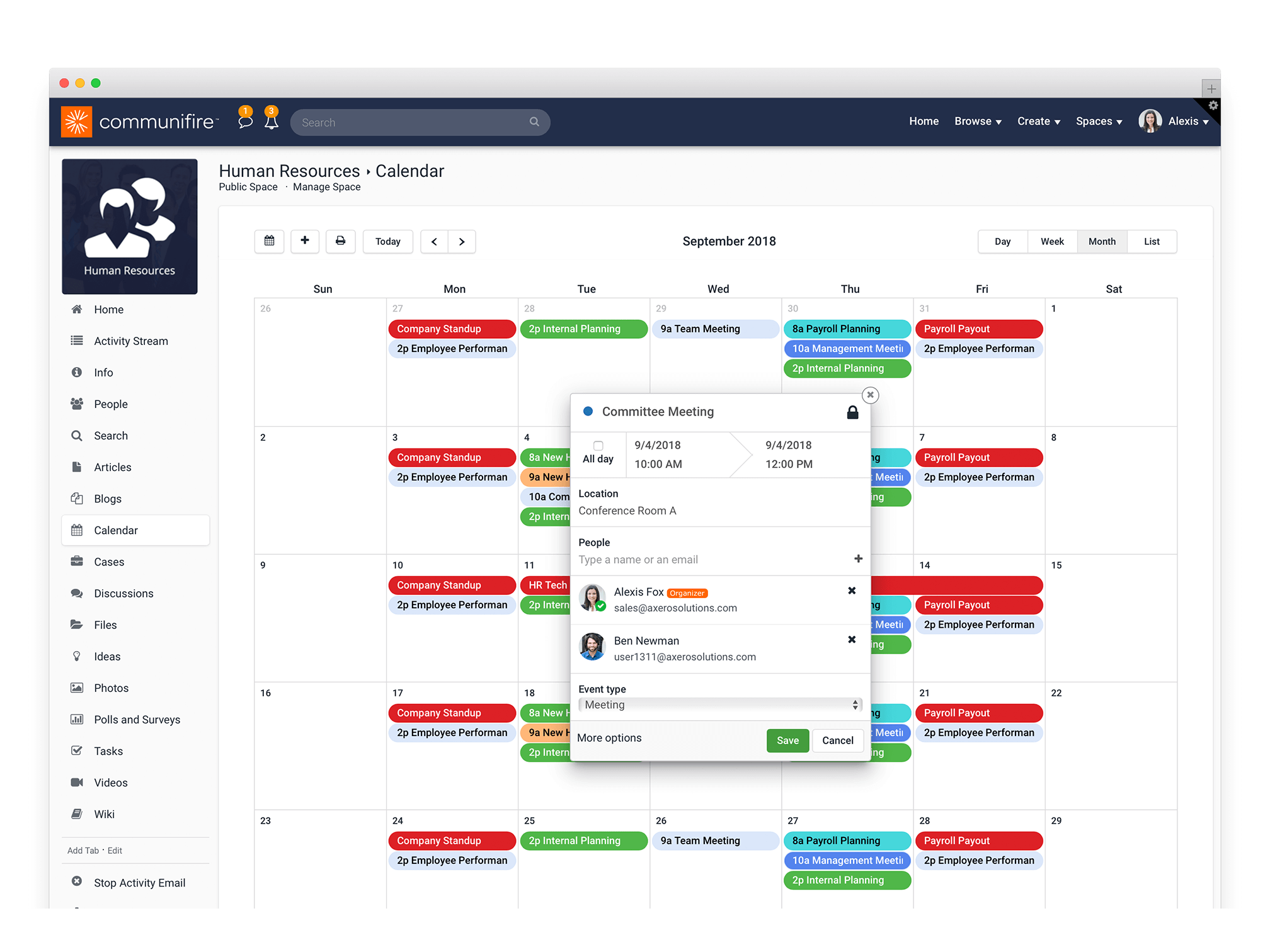
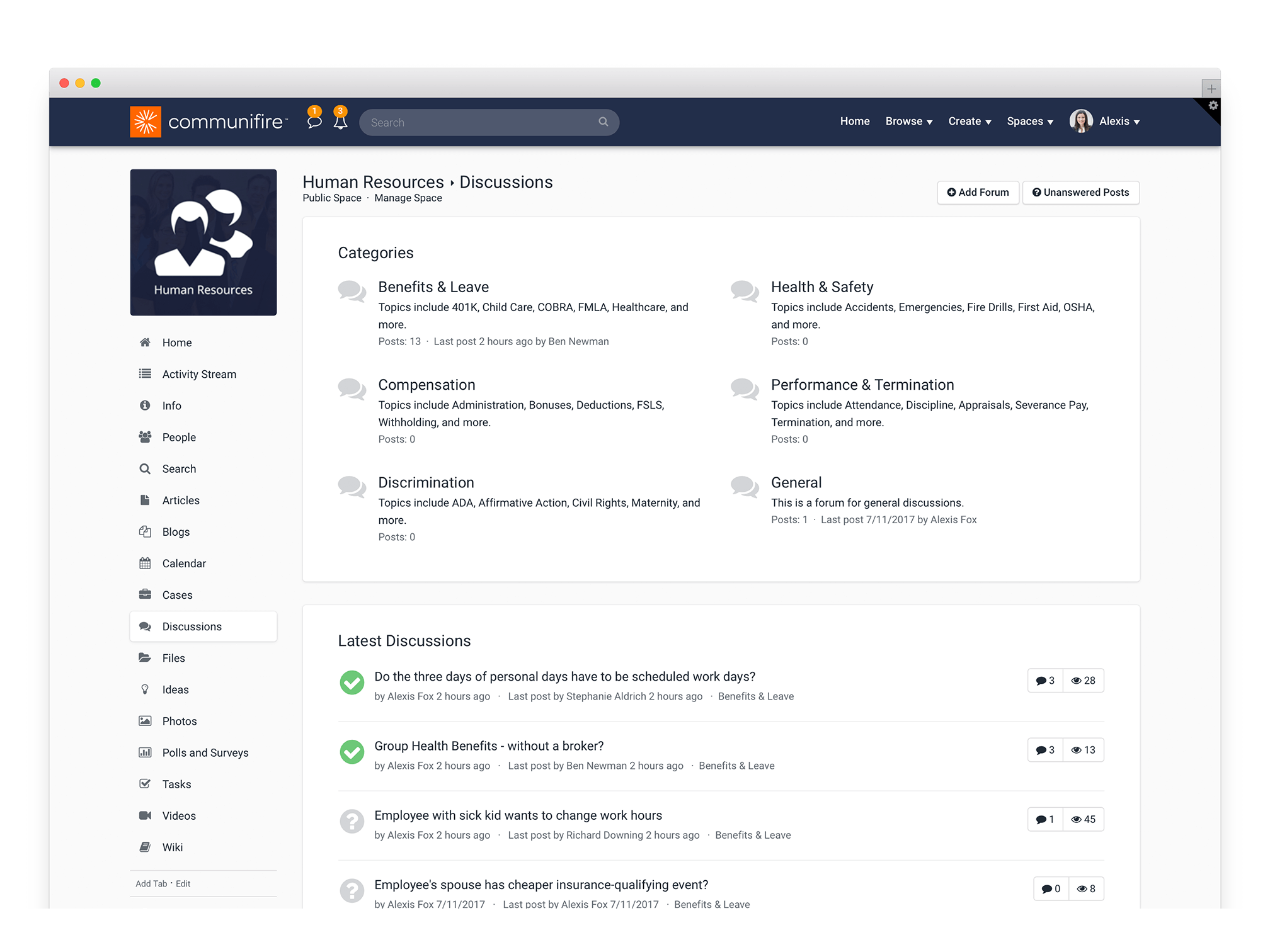
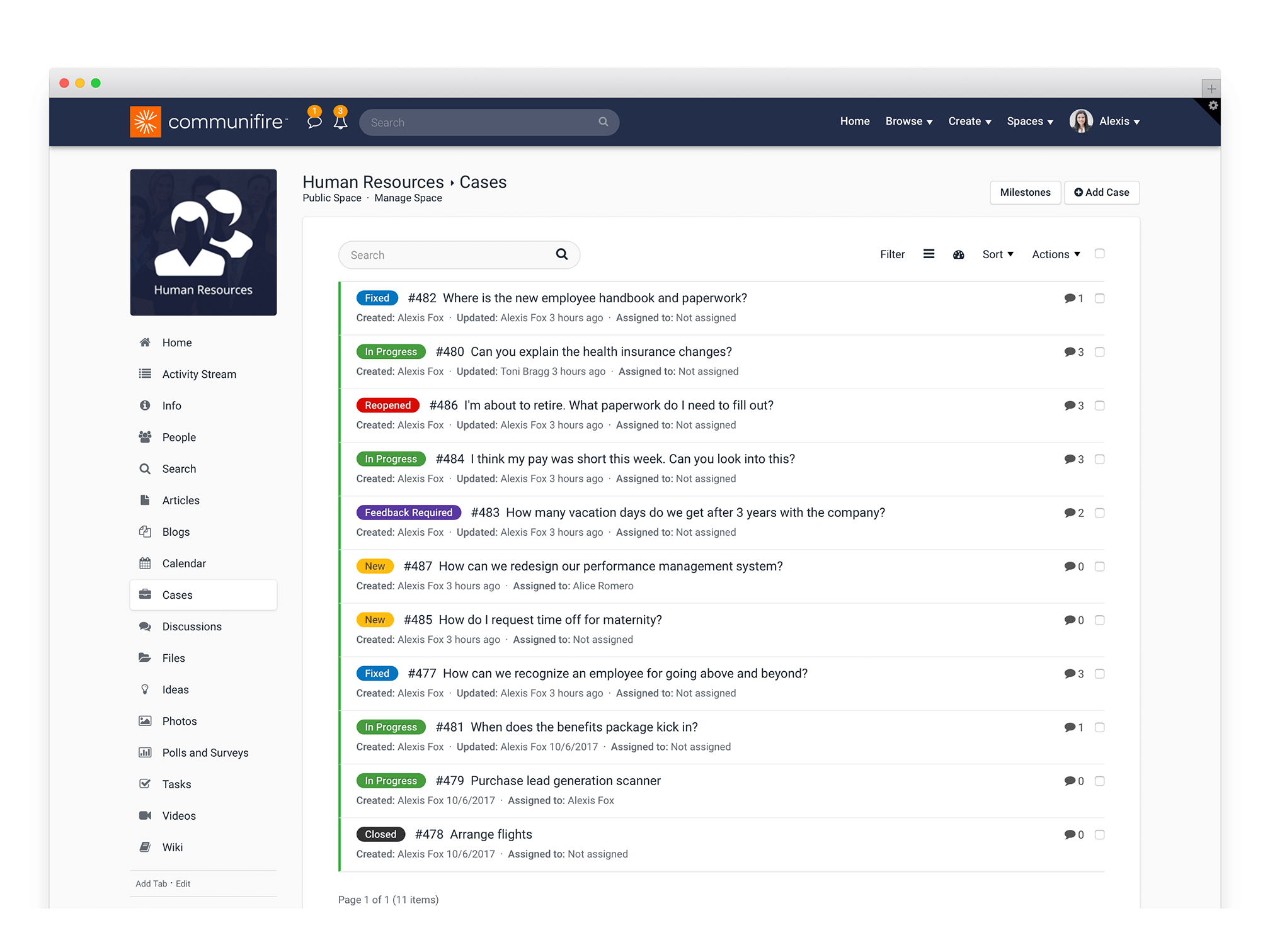

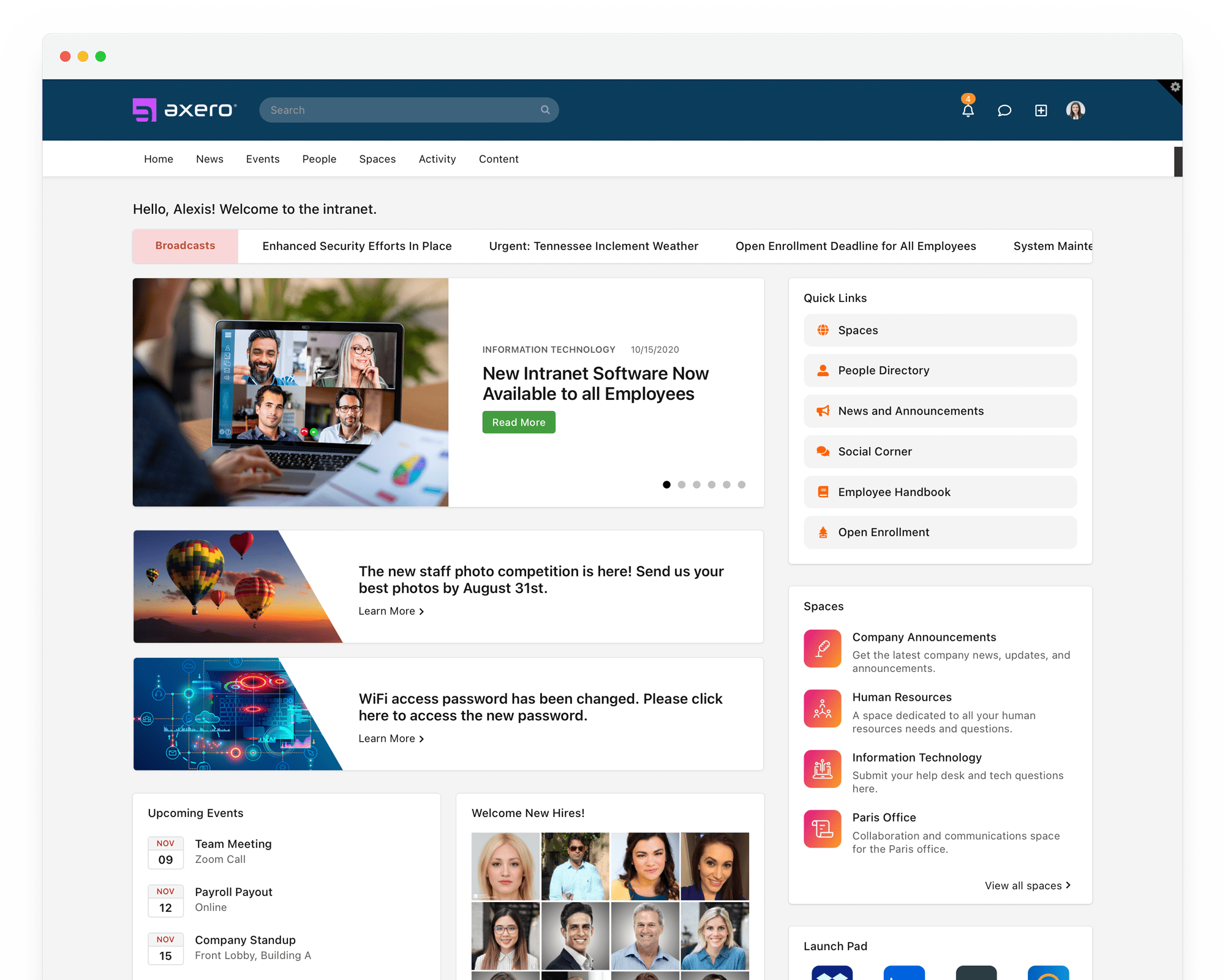












 info@axerosolutions.com
info@axerosolutions.com 1-855-AXERO-55
1-855-AXERO-55


